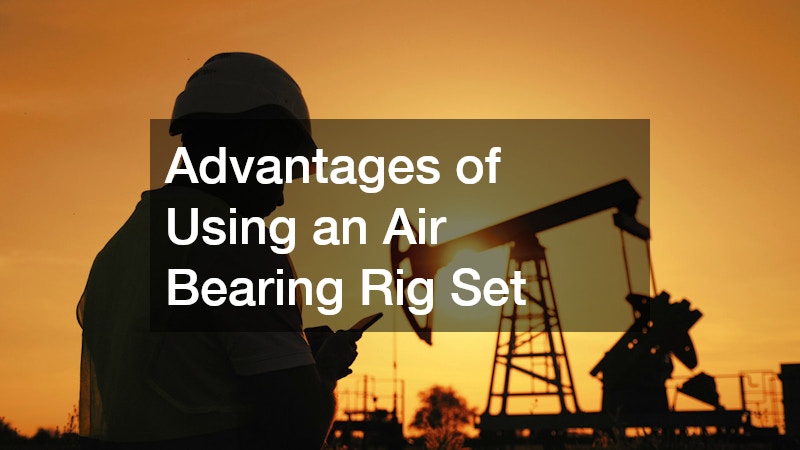
In the world of precision engineering and high-performance testing, the role of accurate and reliable equipment cannot be overstated. One tool that has gained significant recognition among engineers, researchers, and testing specialists is the air bearing rig set. This sophisticated setup provides unparalleled stability and precision, enabling complex measurements and experiments to be carried out with minimal friction and maximum accuracy. Understanding its functions, applications, and advantages can shed light on why it has become a cornerstone in modern testing laboratories and engineering workshops.
Understanding the Air Bearing Rig Set
An air bearing rig set is a type of equipment designed to reduce mechanical friction by supporting a load on a thin layer of pressurized air. Unlike conventional bearings, which rely on direct contact between surfaces, air bearings allow components to float, creating near-frictionless movement.
This design dramatically improves the accuracy of measurements and minimizes wear and tear on mechanical components.
The core principle behind air bearings is simple yet highly effective. By maintaining a precise gap between surfaces using compressed air, these bearings can handle heavy loads while providing smooth, vibration-free motion. In combination with a rig set, this system allows for controlled testing of various materials, mechanical parts, or even full assemblies under highly controlled conditions.
Key Components of an Air Bearing Rig Set
A typical air bearing rig set consists of several crucial components. At the heart of the system are the air bearings themselves, often designed for either linear or rotary motion. Linear air bearings allow for straight-line movement, ideal for testing materials or sensors along a set path. Rotary air bearings, on the other hand, support rotational movement with extremely low friction, which is essential for experiments involving torque, angular acceleration, or rotational stability.
Supporting the bearings is the rig frame, a precisely engineered structure that ensures alignment and stability throughout testing. The frame is often equipped with adjustable fixtures and mounts, allowing users to accommodate different testing setups and configurations. Additionally, a regulated air supply system maintains consistent pressure, while sensors and control systems monitor movement, load, and alignment. These components work in harmony to provide a stable, frictionless testing environment that is both repeatable and reliable.
Applications Across Industries
The versatility of the air bearing rig set makes it invaluable across a wide range of industries. In aerospace engineering, these rigs are often used to test turbine blades, rotors, and other high-precision components under realistic operational conditions. By eliminating mechanical friction, engineers can simulate high-speed rotations and stress tests without introducing variables that might compromise results.
In the field of precision manufacturing, air bearing rig sets are frequently employed to calibrate and verify machining tools. Components like spindles, guideways, and cutting heads can be tested for alignment and smooth operation, ensuring the highest quality in the production of medical devices, semiconductors, and aerospace parts.
Scientific research also benefits from this technology. Laboratories conducting experiments in physics, material science, or metrology rely on the frictionless properties of air bearings to perform sensitive measurements. For example, experiments involving micro-scale forces, vibrations, or angular momentum can be conducted with a level of precision unattainable with conventional mechanical setups.
Advantages of Using an Air Bearing Rig Set
There are several notable advantages of incorporating an air bearing rig set into a testing or engineering environment. First and foremost is the near-zero friction, which enhances both accuracy and repeatability of experiments. Without the variability caused by mechanical contact, results are more consistent, leading to more reliable conclusions.
Durability is another significant benefit. Traditional bearings experience wear and tear over time, potentially affecting performance and requiring frequent maintenance. Air bearings, by floating on a cushion of air, eliminate direct contact and significantly extend the operational life of the equipment.
Another advantage is vibration isolation. Because components float on air, minor vibrations from the environment or other machinery are absorbed, reducing interference with measurements. This makes air bearing rig sets particularly suitable for high-precision applications, such as interferometry, coordinate measuring machines (CMM), or advanced optical systems.
Flexibility is equally important. Many air bearing rigs are modular, allowing researchers and engineers to adjust configurations, test various components, and tailor the setup to specific requirements. This adaptability ensures that the rig remains a versatile tool in rapidly evolving fields of technology and engineering.
The air bearing rig set represents a fusion of precision, reliability, and innovation. By providing a frictionless testing environment, it enables engineers, researchers, and manufacturers to achieve a level of accuracy and performance that traditional equipment cannot match. Its applications span aerospace, precision manufacturing, and scientific research, making it a critical tool for anyone requiring high-fidelity measurements and reliable performance.
As technology continues to advance and industries demand ever-greater precision, the air bearing rig set stands out as an essential instrument for modern engineering. Whether for testing high-speed rotors, calibrating machinery, or conducting sensitive scientific experiments, its unique properties make it an indispensable asset in achieving both accuracy and efficiency.
